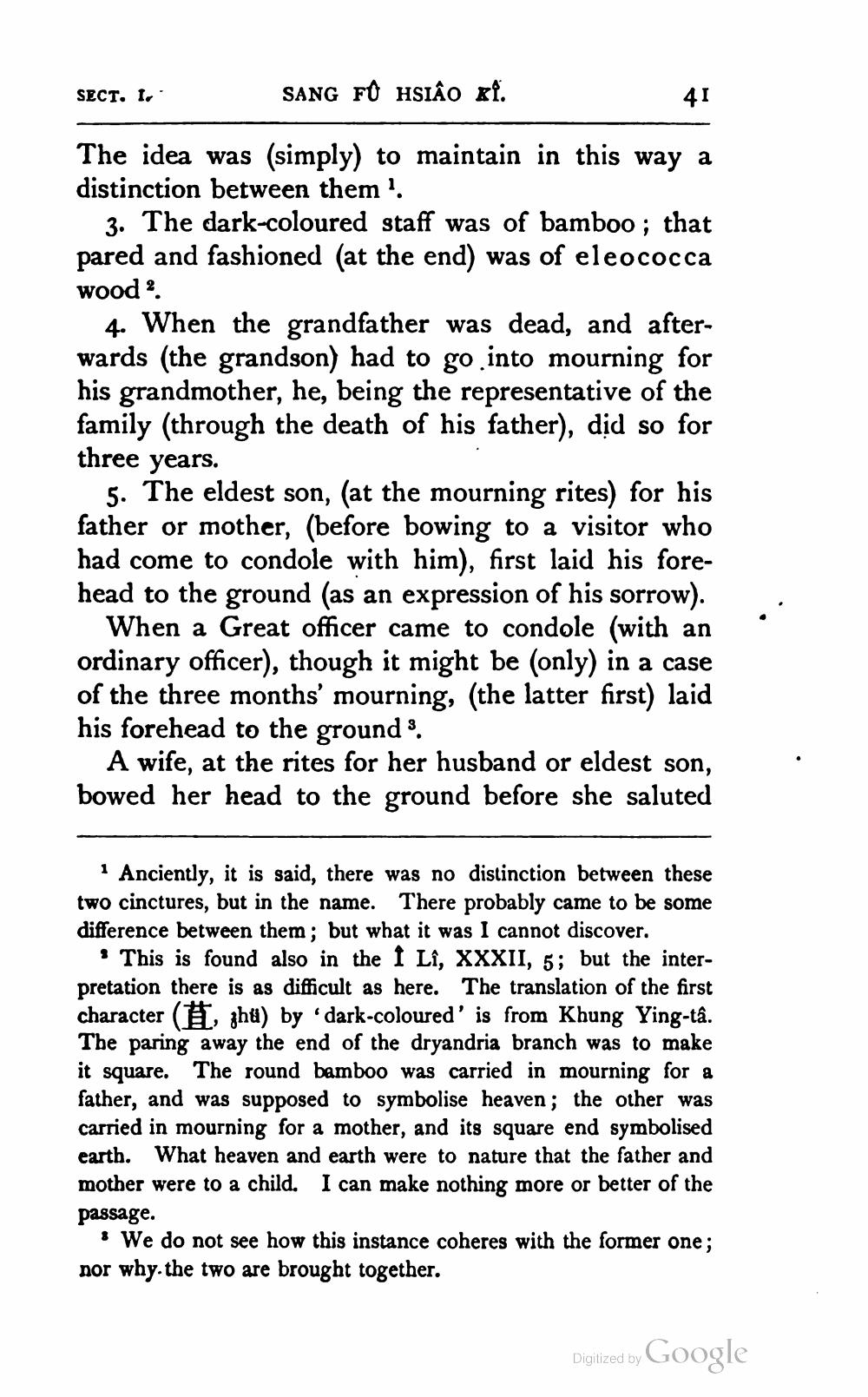________________
SECT. I.
SANG FU HSIÃO ki.
41
The idea was (simply) to maintain in this way a distinction between them'.
3. The dark-coloured staff was of bamboo ; that pared and fashioned (at the end) was of eleococca wood ?
4. When the grandfather was dead, and afterwards (the grandson) had to go into mourning for his grandmother, he, being the representative of the family (through the death of his father), did so for three years.
5. The eldest son, (at the mourning rites) for his father or mother, (before bowing to a visitor who had come to condole with him), first laid his forehead to the ground (as an expression of his sorrow).
When a Great officer came to condole (with an ordinary officer), though it might be (only) in a case of the three months' mourning, (the latter first) laid his forehead to the grounds.
A wife, at the rites for her husband or eldest son, bowed her head to the ground before she saluted
Anciently, it is said, there was no distinction between these two cinctures, but in the name. There probably came to be some difference between them; but what it was I cannot discover.
• This is found also in the I Lî, XXXII, 5; but the interpretation there is as difficult as here. The translation of the first character (F, zhu) by dark-coloured' is from Khung Ying-ta. The paring away the end of the dryandria branch was to make it square. The round bamboo was carried in mourning for a father, and was supposed to symbolise heaven; the other was carried in mourning for a mother, and its square end symbolised earth. What heaven and earth were to nature that the father and mother were to a child. I can make nothing more or better of the passage.
• We do not see how this instance coheres with the former one; nor why. the two are brought together.
Digitized by Google




